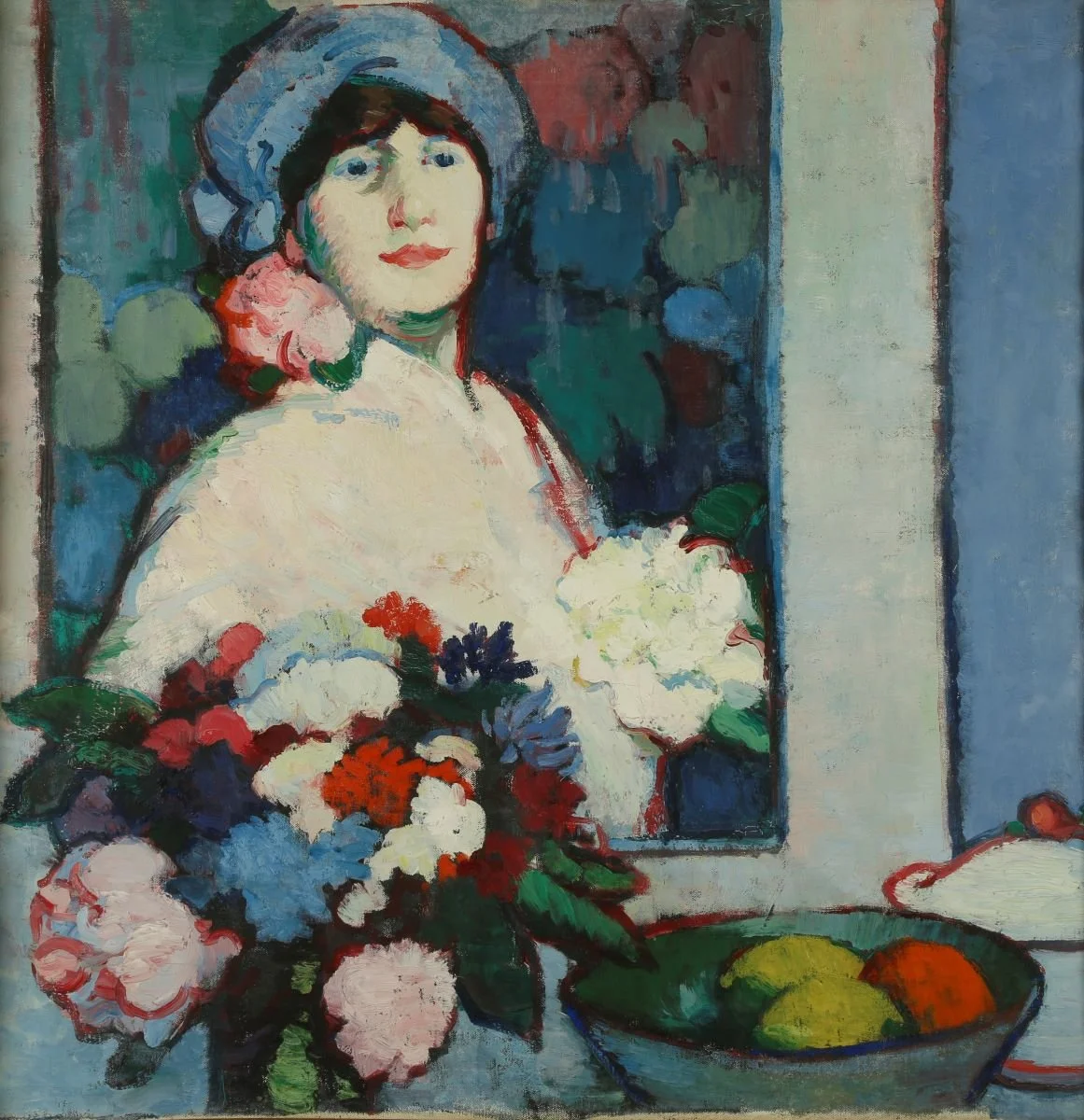Painting on Her Own Terms
Inspired by Anne Estelle Rice’s Self-Portrait,1909-1910
Self-Portrait, Anne Estelle Rice (1877 – 1959) c. 1909-10, oil on canvas
© 2025 Matisse's Flowers. All rights reserved.
This painting from 1909-1910 by Anne Estelle Rice is on view at the National Portrait Gallery in Washington, DC, as part of the Brilliant Exiles: American Women in Paris, 1900–1939 exhibition.
🎨 The Artist: Anne Estelle Rice
Anne Estelle Rice was an American artist who ventured to Paris to paint murals for a prominent American department store. But while there, she found herself immersed in the city’s avant-garde art scene, exhibiting at the renowned Salon d'Automne—a Parisian hub for modernist movements like Fauvism, Cubism, and Surrealism. The same venue showcased some of the greatest artists of the 20th century, including Matisse, Picasso, and Dalí.
🖼 The Work: Self-Portrait in Fauvist Style
Rice’s Self-Portrait is a stunning example of Fauvism, a movement known for its bold colors, expressive brushwork, and a focus on emotion over realism. In this painting, she makes a striking artistic choice: she refuses to "beautify" herself. As National Portrait Gallery curator Robyn Asleson notes, Rice "didn’t beautify herself by any means," compelling viewers to see her as an artist rather than a decorative figure. In a time when women in the art world were often overshadowed and depicted only by men, Rice painted herself on her own terms—a powerful act of self-representation.
💐 The Florals: A Bold and Natural Tribute
Inspired by Rice’s fearless approach, I wanted my floral arrangement to echo the energy of her work. I chose lush hydrangeas and carnations, playing with their fluffy forms to mirror the fullness and vibrancy of the bouquet in her painting. To stay true to the portrait’s effortless, casual style, I had my assistant (a big thanks to my husband, Mike!) hold the flowers upright, matching the angles and relaxed elegance of Rice’s composition. The result? A floral arrangement that feels painterly, expressive, and full of movement—just like her art.
✨ Fun Fact: Breaking the Mold
During her time in Paris, Rice became part of a groundbreaking community of female artists who challenged traditional roles in the art world. While many women were expected to paint delicate subjects, she boldly embraced modernism, proving that color and form could be just as radical in her hands as in the works of her male counterparts.
Sources:
(1) Art UK. (n.d.). Anne Estelle Rice (1877–1959). Retrieved November 8, 2024, from https://artuk.org/discover/artists/rice-anne-estelle-18771959
(2) Salon d'Automne. (n.d.). History. Retrieved November 8, 2024, from https://www.salon-automne.com/en/historique
(3) Britannica, T. Editors of Encyclopaedia. "Fauvism." Encyclopedia Britannica, August 7, 2024. https://www.britannica.com/art/Fauvism.
(4) Davis, C. (2024, July). Brilliant Exiles: The National Portrait Gallery celebrates American women in Paris, 1900-1939. BmoreArt. https://bmoreart.com/2024/07/brilliant-exiles-the-national-portrait-gallery-celebrates-american-women-in-paris-1900-1939.html


